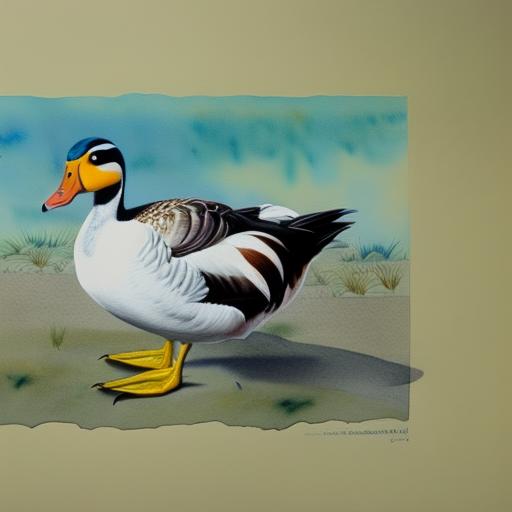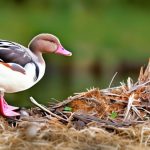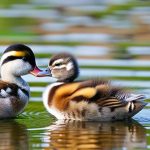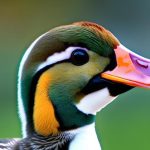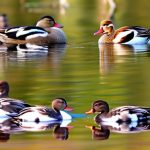Domestic ducks have been an integral part of human society for centuries, providing a source of food, feathers, and companionship. However, many domestic duck breeds are now facing the threat of extinction due to various factors such as habitat loss, genetic dilution, and competition from other species. These endangered domestic duck breeds are not only valuable for their genetic diversity but also for their unique traits and characteristics that make them important for conservation efforts. In this article, we will explore the history, characteristics, threats, conservation efforts, and the importance of preserving endangered domestic duck breeds.
Key Takeaways
- Endangered domestic duck breeds face numerous threats and challenges, including habitat loss, predation, and competition from other duck breeds.
- Conservation efforts for endangered domestic duck breeds include breeding programs, habitat restoration, and public awareness campaigns.
- Preserving endangered domestic duck breeds is important for maintaining genetic diversity, cultural heritage, and ecological balance.
- Supporting and protecting endangered domestic duck breeds can be done through advocacy, volunteering at conservation organizations, and promoting sustainable farming practices.
- The history and origin of endangered domestic duck breeds can be traced back to ancient civilizations, and their unique characteristics and traits make them valuable for both cultural and ecological reasons.
History and Origin of Endangered Domestic Duck Breeds
The history of domestic ducks dates back to ancient times when they were first domesticated from wild ducks for their eggs, meat, and feathers. Over the centuries, humans have selectively bred ducks for various traits such as size, color, and egg production, resulting in the development of numerous domestic duck breeds. Many of these breeds have unique origins and have been bred for specific purposes such as meat production, egg laying, or ornamental purposes. However, with the industrialization of agriculture and the rise of commercial duck farming, many traditional domestic duck breeds have been marginalized and are now at risk of extinction. It is important to understand the historical significance of these breeds and their contributions to human society in order to appreciate the need for their preservation.
Characteristics and Traits of Endangered Domestic Duck Breeds
Endangered domestic duck breeds come in a wide variety of shapes, sizes, and colors, each with its own unique set of characteristics and traits. Some breeds are known for their excellent egg-laying abilities, while others are prized for their flavorful meat. Additionally, there are breeds that are valued for their ornamental qualities, such as their striking plumage or distinctive crests. These breeds often have specific adaptations that make them well-suited to certain environments or production systems. For example, some breeds are particularly hardy and can thrive in harsh climates, while others are well-suited to free-range or pasture-based farming systems. Understanding the unique traits and characteristics of endangered domestic duck breeds is essential for their conservation, as it allows us to appreciate their value and potential contributions to sustainable agriculture and food security.
Threats and Challenges Facing Endangered Domestic Duck Breeds
Endangered domestic duck breeds face a myriad of threats and challenges that put them at risk of extinction. One of the primary threats is habitat loss and degradation, as many traditional duck breeds are adapted to specific environments that are being rapidly destroyed or altered by human activities. Additionally, genetic dilution is a major concern, as the widespread use of a few highly productive commercial duck breeds has led to the loss of genetic diversity in traditional breeds. This genetic erosion makes these breeds more vulnerable to diseases and environmental changes. Furthermore, competition from other species, predation, and inadequate conservation efforts all contribute to the decline of endangered domestic duck breeds. It is crucial to address these threats and challenges in order to ensure the survival of these valuable genetic resources.
Conservation Efforts for Endangered Domestic Duck Breeds
Conservation efforts for endangered domestic duck breeds are essential for preserving genetic diversity and maintaining the resilience of these breeds. One approach to conservation is through the establishment of breed registries and conservation programs that aim to maintain purebred populations of endangered duck breeds. These programs often involve the collection and preservation of genetic material, such as eggs or semen, from individual birds to ensure the long-term viability of the breed. Additionally, efforts to promote sustainable farming practices that support the conservation of traditional duck breeds can help to create market demand for these breeds and provide economic incentives for their preservation. Furthermore, education and outreach programs can raise awareness about the value of endangered domestic duck breeds and encourage public support for conservation efforts.
Importance of Preserving Endangered Domestic Duck Breeds

The preservation of endangered domestic duck breeds is crucial for maintaining genetic diversity within domestic duck populations. Genetic diversity is essential for the resilience and adaptability of livestock species in the face of changing environmental conditions and emerging diseases. Additionally, many traditional duck breeds possess unique traits and characteristics that may hold valuable genetic traits for future breeding programs. For example, some breeds may have natural resistance to certain diseases or be well-adapted to specific environmental conditions, making them valuable genetic resources for future agricultural challenges. Furthermore, preserving endangered domestic duck breeds is important for cultural heritage and biodiversity conservation, as these breeds are often deeply intertwined with local traditions and ecosystems.
How to Support and Protect Endangered Domestic Duck Breeds
There are several ways that individuals can support and protect endangered domestic duck breeds. One way is by choosing to raise or purchase traditional duck breeds for farming or ornamental purposes, thereby creating market demand for these breeds. Supporting local breeders who raise endangered duck breeds can also help to sustain these populations and promote their conservation. Additionally, advocating for policies that support the conservation of traditional livestock breeds and genetic resources can help to create a supportive regulatory environment for their preservation. Furthermore, raising awareness about the value of endangered domestic duck breeds through education and outreach can help to garner public support for conservation efforts. By taking these actions, individuals can contribute to the preservation of endangered domestic duck breeds and help ensure their continued existence for future generations.
If you’re interested in learning more about preserving endangered domestic duck breeds, you may also want to check out this insightful article on creating the perfect farmhouse chicken coop at PoultryWizard. Building a suitable and comfortable environment for your poultry is crucial in maintaining their well-being and ensuring the preservation of rare and endangered breeds.
FAQs
What are endangered domestic duck breeds?
Endangered domestic duck breeds are breeds of ducks that are at risk of extinction due to declining population numbers and lack of conservation efforts.
Why are domestic duck breeds endangered?
Domestic duck breeds are endangered due to factors such as habitat loss, competition from other duck breeds, and lack of breeding programs to maintain their genetic diversity.
How many domestic duck breeds are endangered?
There are several domestic duck breeds that are considered endangered, including the Aylesbury, Cayuga, and Silver Appleyard breeds, among others.
What are the conservation efforts for endangered domestic duck breeds?
Conservation efforts for endangered domestic duck breeds include establishing breeding programs, promoting responsible breeding practices, and raising awareness about the importance of preserving these breeds.
What can individuals do to help endangered domestic duck breeds?
Individuals can help endangered domestic duck breeds by supporting conservation organizations, purchasing ducks from reputable breeders, and advocating for the protection of these breeds.
Meet Walter, the feathered-friend fanatic of Florida! Nestled in the sunshine state, Walter struts through life with his feathered companions, clucking his way to happiness. With a coop that’s fancier than a five-star hotel, he’s the Don Juan of the chicken world. When he’s not teaching his hens to do the cha-cha, you’ll find him in a heated debate with his prized rooster, Sir Clucks-a-Lot. Walter’s poultry passion is no yolk; he’s the sunny-side-up guy you never knew you needed in your flock of friends!

